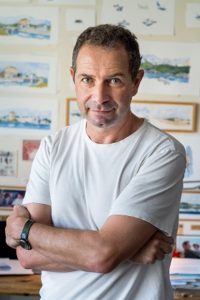 This month’s interview is with Elisha Cooper, an author who both writes and illustrates his own picture books. Instead of doing a standard bio paragraph here, let’s begin the process of getting to know him and his work a little bit better via two lists.
This month’s interview is with Elisha Cooper, an author who both writes and illustrates his own picture books. Instead of doing a standard bio paragraph here, let’s begin the process of getting to know him and his work a little bit better via two lists.
List One—Books Elisha Made:
- While Elisha has created a lot of picture books, here are a few that OPB especially digs. For details on any of them, go ahead and click on those lovely covers!
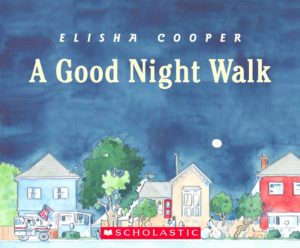
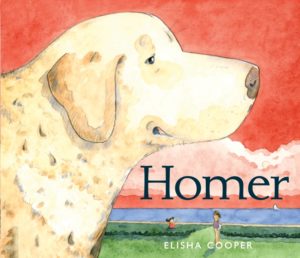
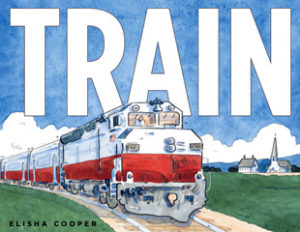
List Two—Stuff Elisha Likes:
And, because we like to underpromise and overdeliver here at OPB, I offer a bonus third list, detailing a few of the various ways you can find out more about Elisha’s fine work via the Internet.
List Three—Bonus Stuff!
With that, let’s move on to the interview!
RVC: I confess—after reading scads of interviews others have done with you, I can’t find anyone who asked this question, so I’ll ask it. How do you pronounce your name? Is “Elisha” like Uh-LIE-sha, or Uh-LEE-sha? Something else entirely? This word-loving, name-loving person needs to know!
EC: It’s Uh-LIE-sha, though I’m fine with any pronunciation. I had a friend in high school who spent four years calling me “Isaiah.” There have been times I wish I’d been named Elijah (the more famous prophet), as that is easier to pronounce, and sounds tougher. But I’ve come to appreciate my name, its ambiguity.
Just this week The Cleveland Plain Dealer reviewed my book, praising the author and “her” beautiful watercolors. I sort of love that.
RVC: Wow, that’s some crackerjack reporting from The Cleveland Plain Dealer. Well done them!
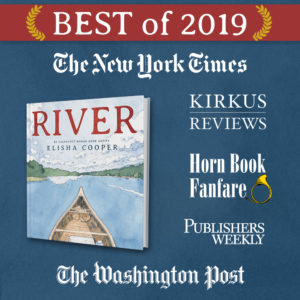 Now that we’ve gotten the vital 411 on this name situation, let’s talk about your most recent picture book, River, which has been well received by readers and critics. In your Author’s Note for that book, you thank the Sendak Foundation. But on other occasions, you’ve also claimed to have been “the worst Maurice Sendak Fellow ever.” I’m getting the sense that you’re a man of great contradictions.
Now that we’ve gotten the vital 411 on this name situation, let’s talk about your most recent picture book, River, which has been well received by readers and critics. In your Author’s Note for that book, you thank the Sendak Foundation. But on other occasions, you’ve also claimed to have been “the worst Maurice Sendak Fellow ever.” I’m getting the sense that you’re a man of great contradictions.
I wonder—is this an example of what you wrote in 2008 for Publisher’s Weekly in an article called “About the Author” where you mused on the “unique ridiculousness of the author’s note”?
EC: I know I’m trying to have it both ways. I was one of the worst Sendak fellows (I didn’t work in the studio they gave me), but the fellowship was also incredibly important for River. It allowed me the space to think, and start sketching nature along the Hudson. With that Publisher’s Weekly piece I believe I was trying to point out how we as authors (we as humans, really) are always trying to craft and present a more perfect version of ourselves. I’m as guilty of that as anyone.
RVC: Speaking of versions of ourselves…how did the actual version of yourself that grew up on a farm inform your work as a picture book maker?
EC: Animals, animals, animals. And views! I was surrounded by barn cats, dogs, goats and cows. I drew them, walked with them, milked them (my goats), and read with them. They were my companions. I read a ton, too, when I wasn’t shooting my BB gun or throwing a football.
In some deep way–and I know this answer has that crafting revisionism I was just disparaging–my childhood could not have been better designed for a future children’s book author.
RVC: Rumor has it that you would’ve preferred to play in the NFL than create kid’s books. Fact, or alternate fact?
EC: Fact. Who wouldn’t?! Yes, like any number of kids in the 80s, I dreamed of playing professional football. I even sent drawings of Lynn Swann to Lynn Swann (the Pittsburgh Steelers were my team). I think I still have the autographed photo he sent me in response. I played football at Yale, but was a back-up. I still love football, how within the brutal mayhem there can be moments of grace and beauty.
RVC: At what point did you realize you were well-suited to create picture books? Was it post-college during that stint as a messenger for The New Yorker where you delivered art and manuscripts (which sounds pretty cool, by the way)?
EC: Hmm, I don’t know if there was one moment. I’ve always kept sketchbooks. Always written, always drawn. When I was at The New Yorker, a colleague suggested I try children’s books and I sort of slid into the field. I’m still uncertain what makes a picture book a children’s book (Sendak has a great rant about that). My hope is that if I love something, and draw and write about it, a child or an adult out there may love it, too.
I don’t mean to punt on your question, but I don’t think I’ve ever had one “eureka” moment. I’ve always felt art in me. Which doesn’t mean I don’t get stuck, or rip stuff up, or struggle. I know something’s good, though, when I tape it on my wall and it stays there.
RVC: I suspect that most picture book makers believe their process to be bizarre, messy, and/or inefficient. Given that, I’m still asking: what’s YOUR process? How does the magic happen for you?
EC: Coffee. Family. Newspaper. Second coffee. Music. Write (café), or paint (home). Third coffee. Paint more. Run. Visit bookstore. Bike along river. Read. Cook. Family. Sports. Sleep.
Repeat.
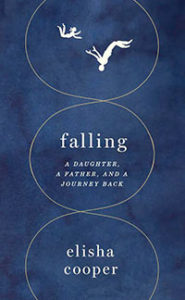 RVC: How does the process differ for making your non-kid books, like A Year in New York and Falling: A Daughter, a Father, and a Journey Back?
RVC: How does the process differ for making your non-kid books, like A Year in New York and Falling: A Daughter, a Father, and a Journey Back?
EC: For my books of essays, the memoirs (Crawling and Falling), I just spent more time writing. Which is sort of obvious! More hours in Brooklyn at favorite cafés, taking notes then writing up those notes, then editing editing editing. The more I make books, the more I think of myself as an editor. This goes for my children’s books, as well. I put something up on the wall, look at it hard, then change it.
RVC: Here’s something that’ll likely surprise you. I think I personally know some of the barns you used in your book Farm. How? Well, I went to Northern Illinois University for my undergrad degree (Go Huskies!), and I’ve read that you spent a lot of time driving around DeKalb County (for you non-NIU types, that’s where NIU is located—about 60 miles west of Chicago, smack-dab in the middle of Big Corn country) with your sketchbook while cooking up that book. Is this possible or am I way off base here?
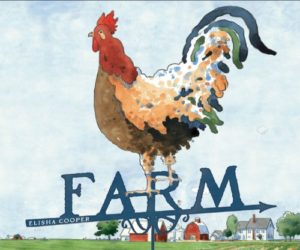 EC: That’s so cool. Go Huskies! Yes, Farm is set almost entirely in DeKalb County. I drove many back roads there. While the farm in my book is a combination of a few farms, the main “model” was a farm in Hinckley, Illinois. A wonderful family let me hang around their farm for the year; a highlight was riding in the their combine harvester.
EC: That’s so cool. Go Huskies! Yes, Farm is set almost entirely in DeKalb County. I drove many back roads there. While the farm in my book is a combination of a few farms, the main “model” was a farm in Hinckley, Illinois. A wonderful family let me hang around their farm for the year; a highlight was riding in the their combine harvester.
Writing that sentence, I realize how lucky I am to be doing what I’m doing (whatever that is).
RVC: What’s the most challenging part about drawing a barn well?
EC: No challenge. A barn is a barn, and I like to draw them (which reminds me: Edward Hopper painted barns so well). Now, having said that, and knowing this makes me sound a little cocky, here’s a list of things I can’t draw: donkeys, giraffes, horses, dinosaurs, dragons, faces, cactuses, politicians, canyons, hands, violins, lips. The list goes on!
RVC: Here’s one final set of questions for this part of the interview. Looking back at Big Cat, Little Cat—one of my Elisha Cooper favs that could’ve been included at the list in the intro but I wanted to save it for the Big Finish here!—what are you most proud of about it now? How has your relationship with it changed over the years?
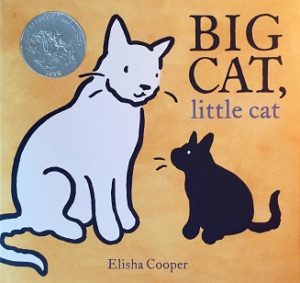 EC: Thank you! I’m so glad you like the book. Though, I’m not sure if I view my books in that way, with pride (in other words, it’s just a book). That could be my hang-up with the word “pride,” as I do feel a sense of contentment with this book. I like the simple ink line in Big Cat. I had never used ink before, so that was a cool learning experience. I suppose the Caldecott Honor changed my relationship with the book, but I have tried not to let it. I try to remember the book I made.
EC: Thank you! I’m so glad you like the book. Though, I’m not sure if I view my books in that way, with pride (in other words, it’s just a book). That could be my hang-up with the word “pride,” as I do feel a sense of contentment with this book. I like the simple ink line in Big Cat. I had never used ink before, so that was a cool learning experience. I suppose the Caldecott Honor changed my relationship with the book, but I have tried not to let it. I try to remember the book I made.
RVC: Okay, it’s time to shift gears to part two of the interview—the no-holds-barred LIGHTNING ROUND! Zippy questions and zappy answers, please. Ready?
EC: Scared!
RVC: Most underrated Pittsburgh Steeler of all time?
EC: Louis Lipps.
RVC: Most surprising thing on your playlist right now?
EC: What’s a playlist? Don’t have one. Though I do have an old wood-cased CD player next to my desk.
For River, I penciled the book to Hamilton, and painted it to Turandot, La Boheme, and Madame Butterfly.
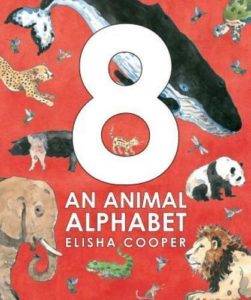 RVC: Which animal didn’t quite make the cut (but you wished had!) for 8: An Animal Alphabet?
RVC: Which animal didn’t quite make the cut (but you wished had!) for 8: An Animal Alphabet?
EC: Ooof. I think I packed every animal I could into that book.
RVC: Which do you fret over more—words or images?
EC: Don’t fret.
RVC: Best compliment a child ever gave on your picture books?
EC: Oh, goodness. I’d have to answer with the image, in my mind’s eye, of a kid after a school assembly clutching my book in her arms and looking up at me. That look floors me every time.
RVC: Three words that sum up your philosophy of picture books?
EC: Location, location, location. Um, no. Isn’t that for real estate? But, you know what, since where I actually am–whether it be in a café or alongside a river–is so essential to my work, I’ll stick with that answer.
RVC: Thanks so much, Elisha!
EC: And thank you! This was fun.
 re in Sarasota, Florida, which is generally ranked as one of the best beaches in the world (thank you, white powder sand!), I got to thinking–how many really good picture books were there about going to the beach and enjoying beach-related activities? I decided to find out and list some of my favs below with a brief explanation about why I liked them.
re in Sarasota, Florida, which is generally ranked as one of the best beaches in the world (thank you, white powder sand!), I got to thinking–how many really good picture books were there about going to the beach and enjoying beach-related activities? I decided to find out and list some of my favs below with a brief explanation about why I liked them.

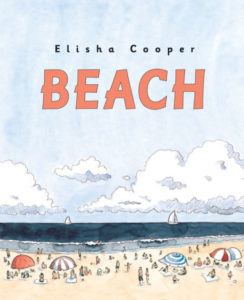
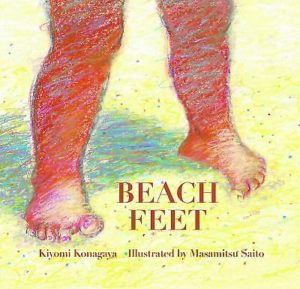
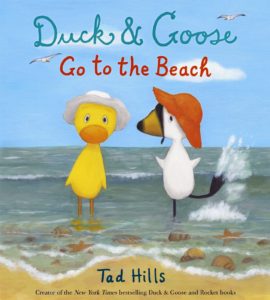
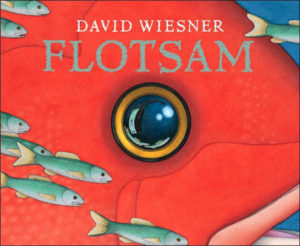
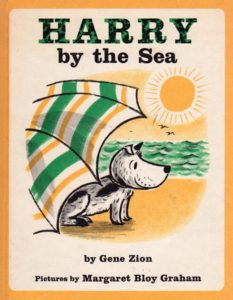
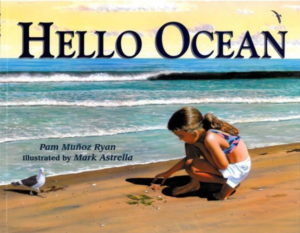
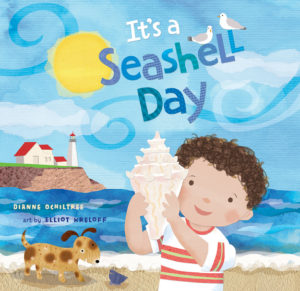
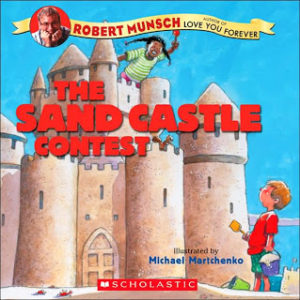
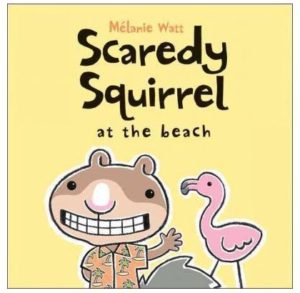
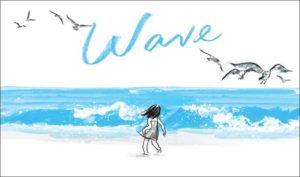
 This month’s interview is with Elisha Cooper, an author who both writes and illustrates his own picture books. Instead of doing a standard bio paragraph here, let’s begin the process of getting to know him and his work a little bit better via two lists.
This month’s interview is with Elisha Cooper, an author who both writes and illustrates his own picture books. Instead of doing a standard bio paragraph here, let’s begin the process of getting to know him and his work a little bit better via two lists.






